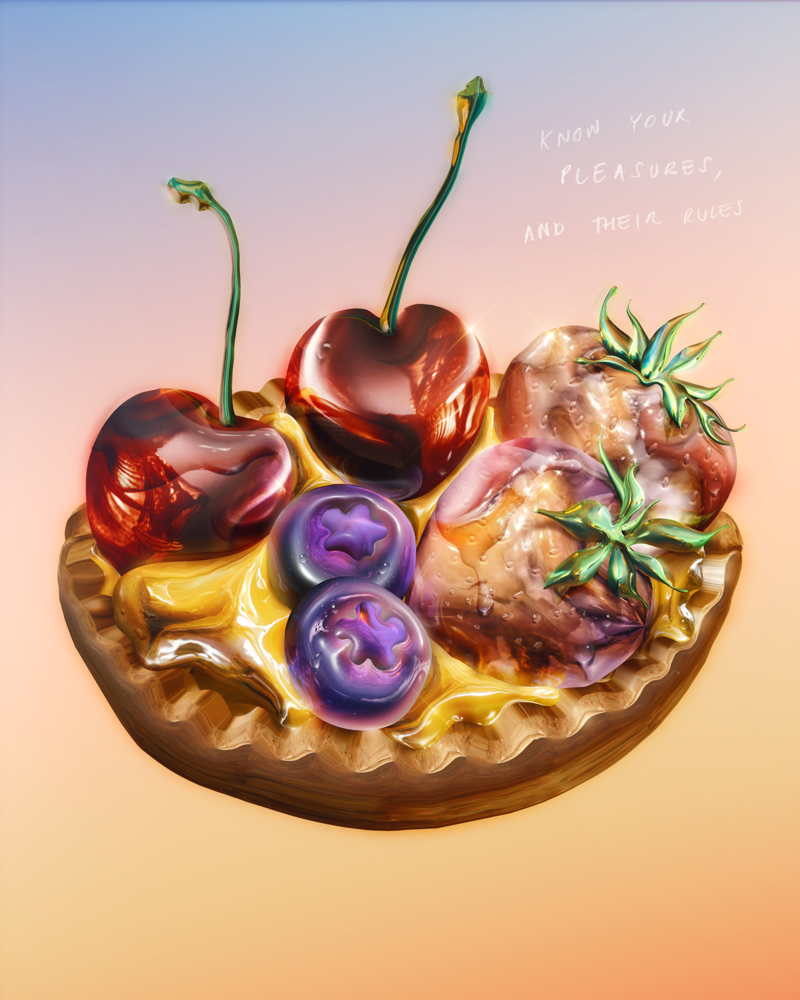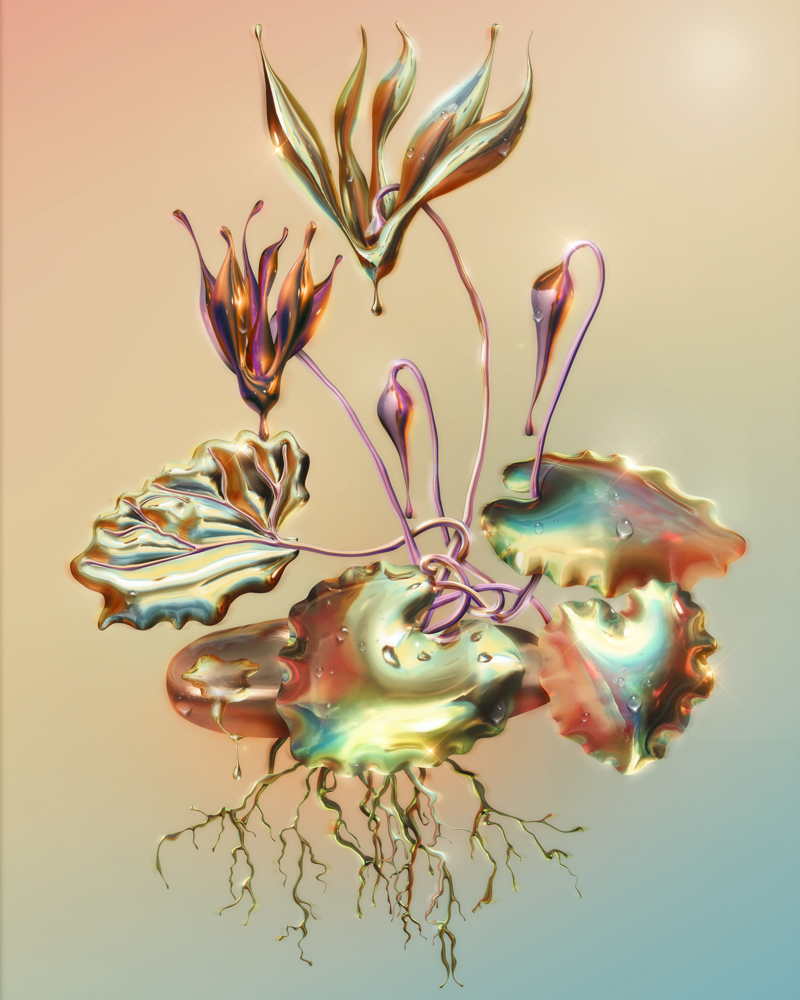
Alex Valentina | Blurring The Lines Between Reality And Surrealism
Surrealism, nature and reality are all themes in the work of visual artist Alex Valentina whose practice works with digital graphics, typefaces and photography. In this interview, he discusses the importance of nature to his practice as well as the duality of the physical and digital worlds that helps to make his art unique.
Born in the hills of Forlì, Italy, but untethered to one place, Alex Valentina has always enjoyed moving around. With a background in editorial graphics which he studied in Urbino and his years in Norway and London to focus on musical projects, he now finds himself in Milan, working as a visual artist.







How did you develop your artistic style? Were there any artists you looked up to during the process or was it purely experimentation?
For me, it is essential to carve out time to carry out personal projects as well, which I use to test new things. They arise spontaneously, from things I perceive in my everyday life. It might be conversations I have with people, something I see, etc. There is a note on my phone with a long list where I write down all the things I would like to try. Clearly, only 30% of these ideas then come to life, but I like to think that slowly I will be able to go more or less through all of them. Perhaps a staple of my creative process is spending too much time on it. I am a victim of details; I spend a few hours making 80% of an artwork, and two weeks defining the remaining 20%. I don’t like that I get lost in the details too much, and I’m working on it. I’m learning to draw the line.
To answer your “when do you know a piece is finished?” I’d say it ends when I get sick of it, and I can’t take it anymore.
Many of your illustrations are of animals, flowers and fruit showing the influence of nature on your work. What is your relationship with the natural environment and how do you use it to inspire your practice?
Nature has always been the source of my inspiration: the colors, textures, proportions. I have a great admiration for nature. It’s competent and unbiased, and what comes out of its processes is always genuine. After being on Earth for 300,000 years, we Sapiens are still captivated by the aesthetics and forms of nature. This fascination may be a simple recognition of our origins, it touches something innate and primal within us. I look at nature everyday to remind myself of the A-B-Cs and to question my perspective. It helps me make things easy by giving them their simple names. This doesn’t just apply to personal issues, but also to historical and temporal matters. There is always this concept that we must respect nature or the environment as an act of charity, as if its fate depends on us when in actuality we are the ones who depend on it, we tend to forget we are part of nature. We cannot survive without it, while it will continue to survive easily with or without us.
Your way of working is quite unique, capturing a mixture of reality in your subjects and surrealism in the metallic colors and smooth textures of your illustrations. What inspired you to include these two contrasting themes in your work?
“I love this quote: Perfect, stable, eternal, immutable things are usually non-living things in nature. Certainly, these are things that do not evolve. Repeating an evolutionary process twice would never get the same result. Our favorite evolutionary strategy? We change the world, and then the world changes us.”
I could say that these are the same mechanisms that regulate my creative process. The artistic processes are not so far from the biological, natural ones. They tend to self-regulate. The dualism between analogical and digital worlds also influences my work. I find it comforting to immerse myself in these hybrid worlds and represent them. The mixes and contrasts are the basis of what I do; when these components exist, something interesting is guaranteed to happen. Sometimes it’s a disaster, but if you manage to make them communicate (the hardest part), it’s like joining two forces of opposite energy to obtain a superpower.




As well as your illustration work, you also delve into the world of photography. Do you feel that your aims differ between these two forms of art? Or are you generally looking to convey the same feelings and emotions with the two?
In general, I believe that every piece I create inevitably reflects a part of me. Although the medium may change, my starting point remains the same. Whether I’m working on a 3D illustration, a photograph, a video, or music, my approach is more or less consistent. While photography has always been a personal hobby, I’ve recently started incorporating it more into my professional work. It adds a touch of reality to my work, helping to dilute its digital nature.
You’ve recently worked on commission projects for Nina Ricci and BMW. Tell us about these projects.
Both the Nina Ricci and BMW projects were pretty straightforward and streamlined. In the case of Nina Ricci, their team reached out to me with an initial brief, which I then used as a basis for research and developing drafts. After a first review with the NR team, I created the final artworks with total creative freedom. The BMW project, by contrast, was more structured and tied to a specific brief. Given its more mainstream character, my range of action was somewhat more constrained. The cute part was seeing my artwork hand-painted on a 30-meter wall, a pretty rewarding experience.
How does the creative process differ when working on projects such as these in comparison to your personal work?
In commissioned works, I may spend more time in the initial stage, where I have to send more drafts and do more reworks, but this ultimately depends on how aligned the client is with my vision. Fortunately, I am usually given enough creative freedom, but there are times when the client is unsure of what they want, which can lead to a phase of exploration.
On the other hand, personal projects come from my emotional state at the time. However, not having a set deadline can lead to a loop of constant retouching and overthinking. This is why I ask for input from people I trust. It’s funny when they begin to not see the difference between the one version and the previous one, it’s a good indication that it is time to move on. I think it is very important to understand when to detach yourself from what you are doing.
Interest in the NFT market has exploded, driving up the price of digital artworks to fantastical levels. What is your opinion about this?
I agree that there is a need to understand how to manage the concept of digital property, but the technology behind it is not environmentally friendly. At the moment, since I do not feel the need to participate in this market, I prefer to take time and educate myself while things evolve.
Also, making digital artworks requires colossal amounts of computing power, and that means greenhouse gasses. What is your position on this point?
My position is that there should be mechanisms for accountability on the enormous energy usage of computers and servers: see taxes, offset options etc. All the endless images and outputs we produce every day stays, consumes energy, and contributes to the issue.
While we are generally more focused on clean/carbon-based energy and their prices, the real point is what we do with all this energy. We are so used to taking it for granted, and it seems infinite to us.
Finally, are you working on any new projects you can tell us a bit about?
In the next months I want to try to carve out more time to work on personal projects, I have many new ideas that I want to try.



All Images:
© Alex Valentina
+ Words:
Emily Nicholas
Luxiders Magazine







